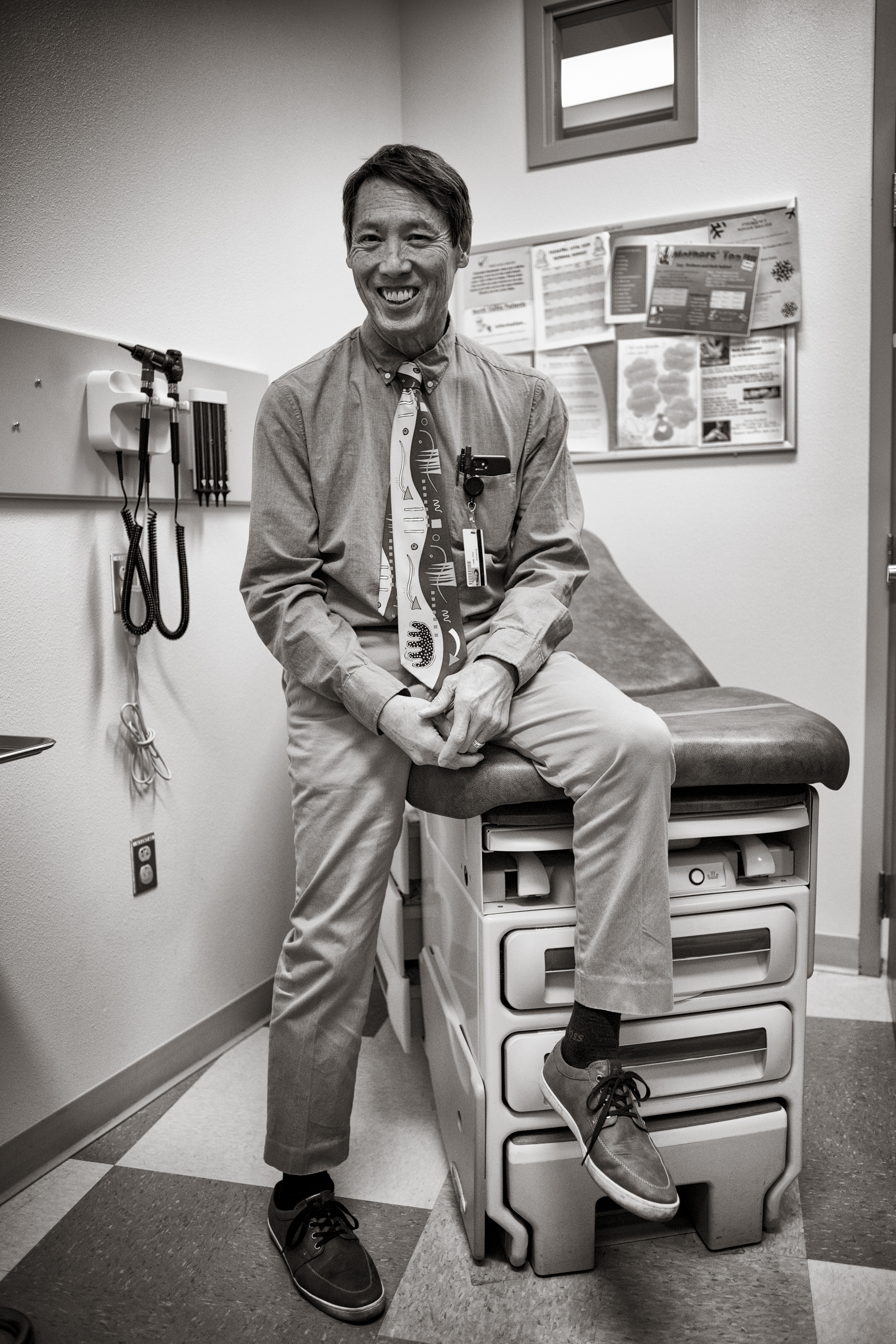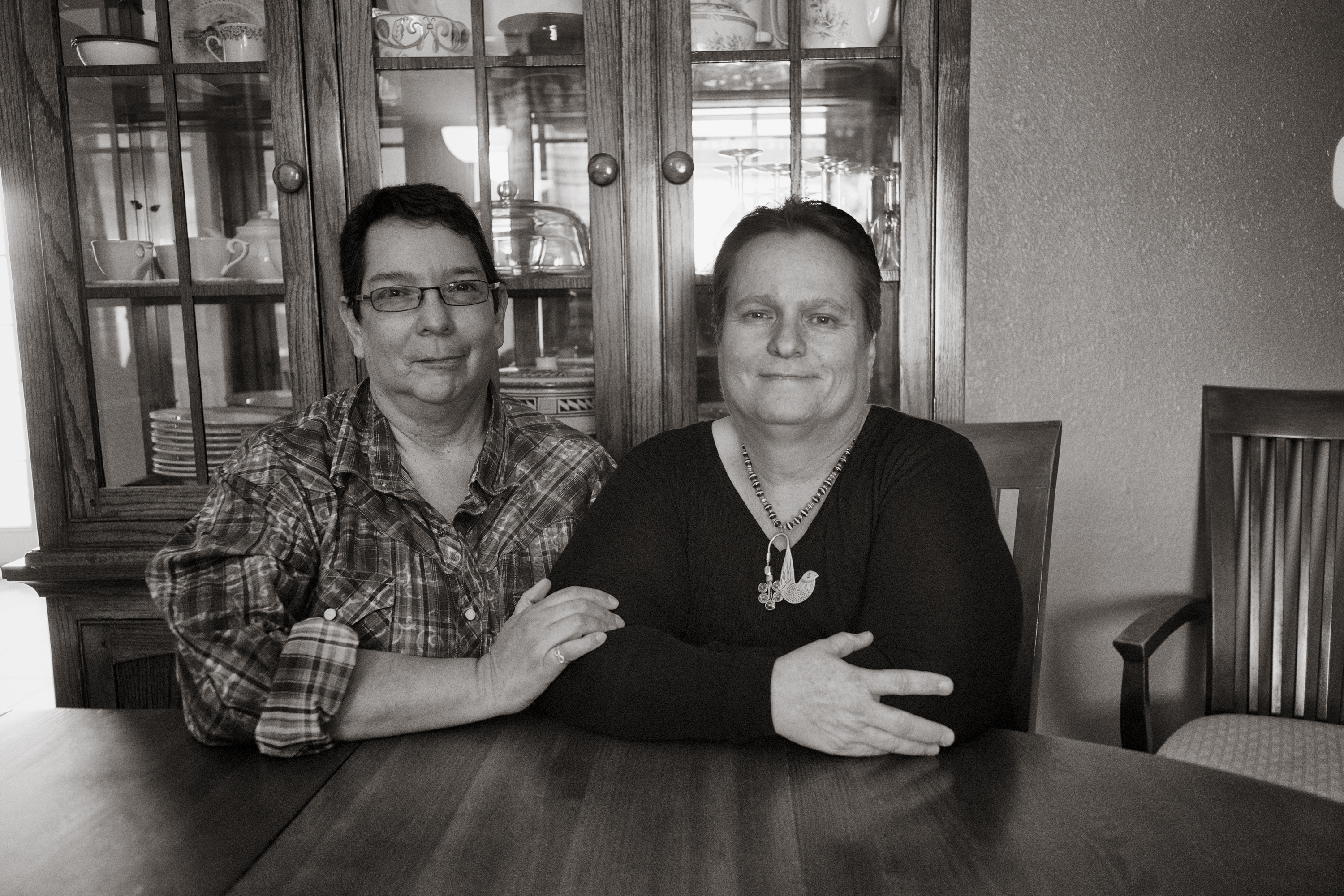How childhood events leave New Mexico’s kids at risk
On her third day alone in the house, 7-year-old Linda Fritts slept in her safe place in the closet. She arranged the shelves and fashioned a nest for herself atop a chest of drawers.
“I would take stuffed animals in there and my books in there,” she says now.
She read by flashlight, Nancy Drew or The Boxcar Children, the series about four inexplicably happy orphans who live by themselves in an abandoned freight car.
“I was jealous,” Linda says. “They had each other.”
That was 1968 or so, when she had a puppy, “and I would take her in the closet, too. And that’s how I survived. That and alcohol.”
She took her first drink at age 6.
The family lived in Paradise Hills, a then-new and nearly barren development in northwest Albuquerque. Linda remembers eating out of cans and scrounging for food, going to the neighbor boy’s house for refuge: “He’d sneak me in after school and feed me.”
Her mother was bipolar, a blackout drunk and drug abuser who popped amphetamines supplemented by benzos, pot, Quaaludes and speedballs.
“My mother was a pedophile,” Linda says flatly. She remembers being pinned down and sexually abused, and the smell of her mother’s Wind Song perfume.
Her father worked as an airplane mechanic, gifted enough to rebuild single-engine airplanes in the front yard. He had schizophrenia.
“I used to tell people, ‘I don’t have parents. I was raised by wolves,’” she says.
Linda is 56 now, with graying close-cropped hair and a fierce determination to tell her story. She’s worked for 25 years to recover from her ACEs — short for adverse childhood experiences, the official term for what she survived. Looking at the past doesn’t scare her anymore.
“I don’t really mind talking about what happened to me,” she says. “Maybe because, when I was a kid, I never had a voice.”
Toxic stress, lasting effects
Today, everyone should be talking about ACEs. That’s the view of a growing legion of experts who regard childhood trauma as one of the most profound and urgent public health challenges in the country.
Hundreds of studies link adverse childhood experiences to a huge array of diseases, mental illnesses and lifelong problems. An ACE is defined as one of 10 kinds of trauma, including all the things that happened in Linda’s life, and more. Among them: sexual, physical or psychological abuse; emotional or physical neglect; mental illness, drug or alcohol abuse, domestic violence; an absent parent or incarcerated household member.
Exposure to these assaults at a young age can alter brain architecture, interrupt neurocircuitry, damage endocrine and immune systems and have lifelong harmful impacts on health and the human condition, potentially for generations to come.
The “toxic stress” of trauma can impair learning and emotional regulation, undermine social functioning and even change the signature of DNA.
The number of children affected is staggering. In 2016, an estimated 34 million children, nearly half of all U.S. kids under 18, had at least one adverse childhood experience, according to an October 2017 report from the Johns Hopkins Bloomberg School of Public Health. More than one in five had two or more ACEs. So did three-quarters of kids age 3 to 5 who got expelled from preschool.
In New Mexico, the picture is especially alarming. The study’s national and state-by-state analysis found nearly 30 percent of New Mexico’s children had two or more ACEs — the fourth highest rate in the country.
The state’s own agencies catalogue long lists of adversities that have profound effects on children’s lives, including some of the nation’s highest rates of alcohol abuse, opioid and other drug abuse, child abuse, domestic violence, poverty and suicide.
A 2016 study by the New Mexico Sentencing Commission established a clear connection between traumatic experiences and juvenile delinquency. Among all 220 teens held in detention in 2011:
- Every one of the girls — 100 percent — had two or more ACEs; for boys the rate was 96 percent.
- Nearly 90 percent of both sexes had four or more ACEs, the point at which future health risks can become dire.
- Nearly 25 percent of the girls experienced nine major traumas, almost the entire ACEs catalogue. A parent beat them so hard it left marks. They saw their mother punched or threatened with a gun. They’d been raped, molested, verbally abused or constantly humiliated. Someone at home was alcoholic or drug addicted. They’d gone hungry.
The study underscored what could be called an ACEs-to-prison pipeline.
“You’re basically creating a group of kids who are going to have lifelong learning problems — they’re basically going to be like human roadkill on the economic highway,” says primary care physician Andrew Hsi, who co-wrote the report with specialists like George Davis, former director of psychiatry for New Mexico’s Children, Youth and Families Department.

Hsi is the medical director of the University of New Mexico’s program, which he founded in 1990 to provide comprehensive medical care and support to substance-abusing pregnant women and their infants. The program helps traumatized mothers create nurturing bonds with their baby; an infant’s brain development suffers in the absence of loving attachment, according to exhaustive research worldwide.
Early trauma doesn’t merely devastate lives; it gets embedded in the brain and body, research shows.
The science of trauma “turns medicine on its head,” Hsi says.
This year, Hsi and the University of New Mexico Law School launched a program to provide medical and legal help to incarcerated teens and their families. Many of them, he says, are trapped in a cycle of generational abuse.
That cycle plays out at All Faiths, an Albuquerque-based children’s center that offers trauma-informed care, treatments specifically aimed at helping people recover from ACEs.
The program also investigates criminal abuse and neglect. Kids who more than 10 years ago sat behind a one-way glass describing their injuries are now returning – this time as parents, accused of abusing their own children. “In some cases, everybody in the family is too busy trying to claw themselves up out of whatever trauma they’ve experienced,” says Krisztina Ford, All Faiths’ CEO and president.
‘No one is doomed’
If this picture appears unremittingly bleak, the bigger message is that all early childhood experiences are powerful. Positive experiences are as determinative as negative ones. They build resilience and give children “protective factors” that help them thrive.
Resilience helps children calm themselves and bounce back from defeats. Even children who suffer severe adversity can develop it, according to Harvard University’s Center on the Developing Child, a national leader in toxic stress and brain research. Resilience is built upon healthy early parenting and bonding, which make infants feel safe and nurtured.
“Loving the baby, kissing, holding, massaging, breastfeeding: The baby understands that language,” says Sanjeev Arora, a UNM physician and founder of Project ECHO, which brings high-quality medical treatment to remote parts of the state and worldwide. “The entire human experience is very intricately linked to feelings of security and lack of fear.”
Resiliency therapy works, affirms Christina Bethell, lead author of the 2017 Johns Hopkins study and director of the school’s Child and Adolescent Health Measurement Initiative. Her research underscores the capacity of the infant brain to restore itself.
“History isn’t destiny,” she says. “No one is doomed.”
Native American children at particular risk
Ask trauma experts for solutions, and the answers come instantly: Give high-quality treatment and support to at-risk pregnant women and their children during the critical development years, from conception to age 3. Extend support to entire families. Change the language with which patients are addressed. Instead of asking ‘What’s wrong with you?’ ask, ‘What happened to you?’
In Indian Country, the answers to that question resonate over generations. Extermination, forced relocation, abusive boarding schools, ruptured families, the loss of land, culture and language – all these tragedies are increasingly viewed by health experts through a prism of historical grieving.
The transfer of trauma, as researchers put it, inevitably impacts children. Suicide among Native American youth stands at more than twice the U.S. rate. Alcohol and substance abuse is far more prevalent on Indian reservations: A 2014 study by the National Institute on Drug Abuse found 56 percent of Native American eighth-graders used marijuana as compared to 16 percent of eighth-graders nationally. The use of heroin and Oxycontin was two to three times higher among Native youth than the national average.
Even elementary schoolchildren are at greater risk. A December report by Native Strong: Healthy Kids, Healthy Futures, at the Notah Begay III Foundation, based at Santa Ana Pueblo, found more than 50 percent of Native American third-graders in New Mexico were overweight or obese.
“Everything can be traced to trauma,” says Olivia Roanhorse, the Native Strong director.

Hope that brings change
If Linda Fritts had received counseling when she was a child, back in the late 1960s and early 1970s, no one would have given her trauma-informed care. The concept wasn’t born yet.
Child Protective Services didn’t investigate. Nobody paid attention. Her teachers never intervened — not when she cut class, not when she showed up drunk in middle school, not when she dropped out in ninth grade.
“I didn’t fall through the cracks,” she says. “I blasted through them.”
When she was 14, her mother committed suicide. At 17, she married “a raging alcoholic.” By her 20s, she was living in a house with no running water and three children under the age of 12. To make the toilet work, her oldest son would take a bucket to her in-laws’ house next door, fill it with water, walk home and pour the water into the toilet to make it flush.
Linda managed to get her GED and a nursing certificate. But as she neared 30, severe depression took over. Plagued by thoughts of suicide, she finally ended up in a hospital clinic. Help came in the unlikely form of a therapist who filled out her intake papers. She offered to take Linda on as a patient.
“The most important component for successful recovery is having hope,” Linda says. It had arrived.
Slowly, she began to take stock. Her children were nearly 12, 6 and 4. For years, she believed she’d been protecting them. She’d tried not to fight with her husband in front of them. She recalled teaching herself to binge drink so she could white-knuckle-it and stay sober when they were around.
But therapy lifted the veil.
She moved into a battered women’s shelter and entered a 12-step program. She got a divorce. She came out as a gay woman. Jobs fell into place at an assisted living facility, a hospital and at the Milagro Program for substance-abusing pregnant women, run by Andrew Hsi.
Hsi recalls how she stopped him in his tracks one day. He and Linda had tea, and she told him how even at age 6, alcohol helped her dissociate from the abuse.
“She told me she never could have survived that amount of trauma without alcohol,” Hsi says. He knew, of course, that people used addiction to cope. But he’d never heard someone so articulately describe the need for numbness at such a young age.
“She was the first person to really make me understand,” Hsi says.
Today, Linda has 26 years of sobriety, and counts 25 years in therapy. She married the woman she calls her soul mate. She can talk to her about anything.
She’s at community college now, middle-aged and going for her bachelor’s degree, aiming to become a social worker. She says she wants to be a wounded healer.
Last semester, she got all As and Bs.
*************
Amy Linn has written about social justice issues for publications including the New York Times, Philadelphia Inquirer and Salon. She can be reached by email through amylinn@searchlightnm.com.